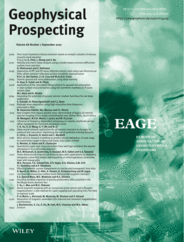
Full text loading...
 , Sergey Fomel1, Nam Pham1
, Sergey Fomel1, Nam Pham1
We propose to adopt a deep learning based framework using generative adversarial networks for ground‐roll attenuation in land seismic data. Accounting for the non‐stationary properties of seismic data and the associated ground‐roll noise, we create training labels using local time–frequency transform and regularized non‐stationary regression. The basic idea is to train the network using a few shot gathers such that the network can learn the weights associated with noise attenuation for the training shot gathers. We then apply the learned weights to test ground‐roll attenuation on shot gathers, that are not a part of training input to obtain the desired signal. This approach gives results similar to local time–frequency transform and regularized non‐stationary regression but at a significantly reduced computational cost. The proposed approach automates the ground‐roll attenuation process without requiring any manual input in picking the parameters for each shot gather other than in the training data. Tests on field‐data examples verify the effectiveness of the proposed approach.

Article metrics loading...

Full text loading...
References


Data & Media loading...

